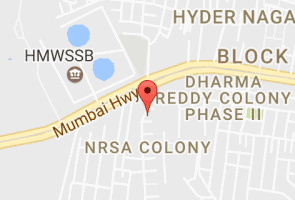Corns and Calluses and Ayurvedic Treatment
All to often, corns and calluses are the price we pay for neglecting our feet. Corns and calluses are very much alike; they just differ in where they occur.
Corns show up on the bony area on top of the toes and the skin between the toes. Corns feel hard to the touch, are tender, and have a round appearance. Extreme pain can change the way a person stands or walks. Such changes can, in turn, cause pain in the ankle, back, hip, or knee.
Calluses can occur on any part of the body that goes through repeated pressure or irritation. Common places are on the ball or heel of the feet, on the hands, and on the knees. Calluses are flat, painless thickenings of the skin.
A bunion, on the other hand is an enlargement of the bone on the interior of the big toe, often accompanied by tender, inflamed tissue on top of the bump. The tendency to develop bunions seems to be hereditary, but without added pressure to the big toe, they might never appear.
Women have these types of problems more often than men, probably because women wear high-heeled footwear and other footwear that do not fit properly.
Causes
Corns and calluses form to prevent injury to skin that is repeatedly pinched, rubbed, or irritated. The most common causes are: shoes that are too tight or too loose, or have very high heels; tight socks or stockings; deformed toes; walking down a long hill, or standing or walking on a hard surface for a long time; and jobs or hobbies that cause steady or recurring pressure on the same spot can also cause calluses.
Guidelines & Ayurvedic Remedies
- Corns and calluses do not usually require medical attention, unless the person who has them has diabetes mellitus, poor circulation, or other problems that make self-care difficult. It is important to see a doctor if the skin of a corn or callus is cut, because it may become infected. If a corn discharges pus or clear fluid, it is infected.
- Prevention is the most important cure, and this is accomplished by eliminating undue pressure at certain sites of the foot. Horse shoe-shaped rubber pads, wads of cotton, lamb’s wool, or other kinds of inserts can be used to cushion affected areas.
- Get rid of footwear that fit poorly, especially if they squeeze your toes together. Select good supporting footwear that have a wide toe box and a low heel. Feet should be measured—while standing—whenever buying new footwear. It is best to shop for footwear late in the day, when feet are likely to be swollen.
- An easy method to relieve corns is to soak your feet in plain lukewarm water or Epsom salt bath for 5 to 10 minutes, then use a pumice stone (a volcanic rock) to gently rub off the dead skin a little at a time. After you have rubbed your feet, apply castor oil to keep your feet soft.
- Soak a small piece of cloth in vinegar and bind it on the toe; leave it on day and night. The corn will come out by the root. Another variation is to soak the feet in a shallow pan of warm water with half a cup of the vinegar. Rub down the corns and calluses with a clean pumice stone or good quality waterproof sand paper.
- Soak the feet in warm water for 15 minutes; apply a small piece of the inside of a lemon peel or skin of ripe banana to the corn; tape it and leave it on overnight. In three days the corn should lift off.
- The milky juices of raw papaya and green figs (anjeer), pulp of raw potato, paste of liquorice (mulethi), oil extracted from outer shells of cashew nut (kaaju) etc., are all valuable in corns as external applications.
- A recommended Ayurvedic remedy is the application of a paste made by combining one teaspoon of aloe vera gel with one half teaspoon of turmeric. The corn or callus should be covered with the paste and bandaged overnight. It should be soaked in warm water for 10 minutes every morning, and given a daily massage with mustard oil and an application of kaaseesadi taila.
Note
As we all are genetically different with different constitutions and patterns, we respond to treatments in many different ways. Hence Standard Ayurvedic Treatments are always individually formulated. This article is intended only for information. It is not a substitute to the standard medical diagnosis, personalized Ayurvedic treatment or qualified Ayurvedic physician. For specific treatment, always consult with a qualified Ayurvedic physician.
ADDRESS
Dr. Murali Manohar Chirumamilla, M.D.
(Ayurveda)
RAKSHA AYURVEDALAYA
Plot No. 13, H.No: 16-2-67/13,
Ramamurthy Nagar (CBCID Colony),
Hydernagar,
Landmark: Kukatpally Area, Metro Train Pillar No. MYP 29.
HYDERABAD.
PIN - 500 085. Telangana State
INDIA
CONTACT DETAILS
Mobiles: +91 (0) 9246575510, 9177445454
E-mail: muralimanohar2008@gmail.com
Web site: http://www.muralimanohar.com
Timings:9.30 a.m. to 7 p.m. Sunday 8 a.m. to 2 p.m
LOCATION MAP

